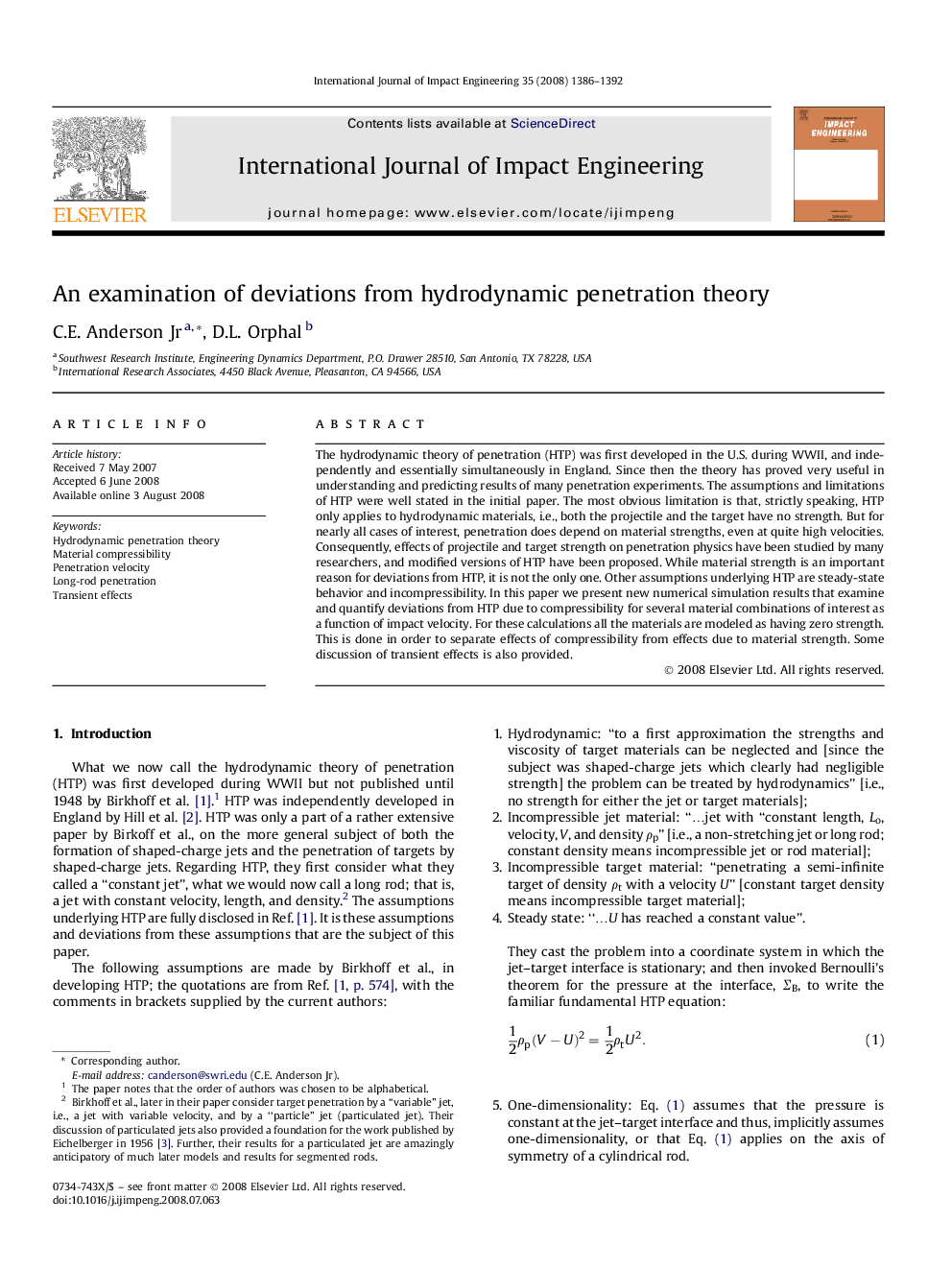| Article ID | Journal | Published Year | Pages | File Type |
|---|---|---|---|---|
| 779443 | International Journal of Impact Engineering | 2008 | 7 Pages |
The hydrodynamic theory of penetration (HTP) was first developed in the U.S. during WWII, and independently and essentially simultaneously in England. Since then the theory has proved very useful in understanding and predicting results of many penetration experiments. The assumptions and limitations of HTP were well stated in the initial paper. The most obvious limitation is that, strictly speaking, HTP only applies to hydrodynamic materials, i.e., both the projectile and the target have no strength. But for nearly all cases of interest, penetration does depend on material strengths, even at quite high velocities. Consequently, effects of projectile and target strength on penetration physics have been studied by many researchers, and modified versions of HTP have been proposed. While material strength is an important reason for deviations from HTP, it is not the only one. Other assumptions underlying HTP are steady-state behavior and incompressibility. In this paper we present new numerical simulation results that examine and quantify deviations from HTP due to compressibility for several material combinations of interest as a function of impact velocity. For these calculations all the materials are modeled as having zero strength. This is done in order to separate effects of compressibility from effects due to material strength. Some discussion of transient effects is also provided.
